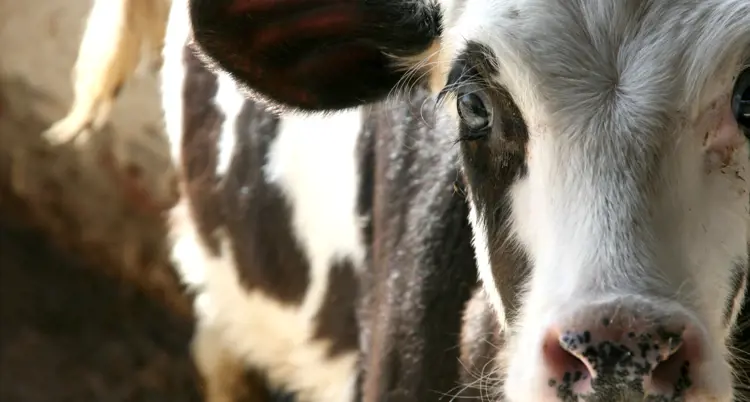A calving season plan
Having a calving plan in place before the season starts can save you from extra work during the season and can result in lower mortality rates, fewer sick calves, better-performing calves, and happier staff. Entering the calving season without a plan can lead to a reactionary approach, where various methods, procedures, and medications may solve problems, but it's unclear which strategy was the most effective when using this "shotgun" approach. If your calf-rearing procedure is working well, there may be no need to change it. However, maybe it needs some improvement, or perhaps you think it doesn’t - but it does. Alternatively, your procedure may be effective but costly, and you may want to save money. However, saving money could result in losses and poor-quality calves.

As a well-respected headmaster once said, “But there are certain things that do not change and must not change” I think we can use this in our approach to calf management. The fundamentals are well known and basic. This includes colostrum management, feed and water, basic housing needs, sanitation and consistency. The success of the calving season also starts before the calves hit the ground. The vaccination program for the mothers and the timing are critical. Farms may vary with challenges, but the fundamentals are always the same.
We could divide the system into 3 sections or measures:
1. Fundamentals
2. Preventative
3. Treatments
These three aspects are also in order of importance. The fundamentals need to be at an acceptable level before preventative and treatment measures are put in place. The preventative and treatment measures cannot correct the lack of basic fundamental measures needed for good, healthy calves. For example, treating all calves for a sickness instead of trying to find the reason why these calves are getting sick in the first place.
The following are some examples of a few fundamental aspects:
Colostrum Management (First 24 Hours):
• Calves should receive colostrum within the first 1–2 hours after birth.
• Use high-quality colostrum (thick, yellow, and clean) with high antibody levels.
• Aim for about 10% of the calf’s body weight in colostrum within the first 12 hours (typically 3–4 litres).
• Remember the Q’s for colostrum: Quality, Quantity, Quickness.
Housing & hygiene:
• Keep calving pens and calf housing clean and dry to prevent disease.
• Ensure good airflow without drafts to reduce respiratory issues.
• Provide enough space to prevent overcrowding - one calf per pen or ample space in group housing.
Nutrition:
• Milk or Milk Replacer: Feed 10 - 15% of body weight daily. Ensure consistent feeding times and temperatures (~38 - 40°C).
• Offer clean, fresh water from day 2 to encourage rumen development.
• Begin offering a quality starter (high in energy and protein) from day 3 - 5.
• Wean when the calf consumes at least 1 - 1.5 kg of starter feed consistently for 3+ days (usually around 6 - 8 weeks).
Health monitoring:
• Observe daily to check for signs of scours, coughing, nasal discharge, or lethargy.
• Follow a vet-recommended schedule for dehorning and a vaccination program specific for your farm. Dehorn early (under 8 weeks) for less stress.
• Dip the navel in iodine shortly after birth to prevent infections.
Record keeping:
• Track birth dates, colostrum intake, weight gain, vaccination, and any health treatments to monitor growth and catch issues early.
Even with good fundamental measures in place, excellent facilities and well-trained staff, calves still get sick, and there will always be some challenges, as we cannot eliminate all possible risks that nature will throw at us. With modern dairy farms being highly stocked and with very tight breeding seasons, there is often a high concentration of calves. The challenge of numbers will always lead to a higher risk of underperforming calves. Sickness and diseases spread more quickly when dealing with large numbers of animals in a restricted place. The facility itself might not be adequate for the number of calves, and there might be a lack of attention to detail if staff are under pressure, which is understandable. These conditions highlight the value of preventative measures. Just as people take multivitamins to support their health during periods of increased risk, strategic preventative protocols can help reduce the challenges of calf rearing in high-density operations.
There is a large industry built on these preventative measures, and these products can have positive health effects; they are certainly useful at times. The challenge is to use one that works for your situation, that’s practical and affordable. Products such as oral minerals and vitamins, rumen development and gut enhancing agents like yeasts, probiotics, prebiotics and many other products fall into this category of preventative measures. Naturally, calves would not need preventative and treatment measures, but they do not live in a natural environment on a modern dairy farm, and we need these calves to survive, grow and produce to the best of their ability.
The last measure is treatment, and this is the serious stage. Vets and other animal health experts should be consulted to help you plan this approach. If the calf is a little sick, it will receive a treatment plan. Moderately sick calves could have a slightly different plan, and severely sick calves might receive the “last chance” plan, which is often the most expensive. The idea is to try to avoid having to go directly to the dangerously sick measure of treatment.
An example would be:
Fundamental measure: Good dry cow management and vaccinations, good colostrum management, good hygiene and biosecurity measures, good weaning and nutrition plan, well-trained staff and consistency.
Preventative measure: Having a designated sick camp so sickness and disease do not spread. Using products like minerals and vitamins, and other health-promoting products to give the calf an extra immune and health boost.
Treatments: Having a plan for treating slightly, moderately or dangerously sick calves. Such as early treatment of scours and dehydration. More serious cases are treated with injectables such as antibiotics for infections. Your local vet will be the best person for this type of advice.
Having a well-thought-out plan in place can provide reassurance as you approach calving season. While flexibility is essential - plans may need to adapt to changing circumstances. It is important to recognize when a strategy isn’t delivering the desired results and be willing to adjust accordingly. Ideally, your plan should strike a balance between effectiveness and cost-efficiency, ultimately supporting the long-term health of your future replacement animals. It is also worth remembering that every farm faces unique challenges; a solution that works well in one setting may not be suitable in another, regardless of how passionately it's promoted.
Contact your local De Heus technical advisor to assist in developing a calving season plan- https://www.deheus.co.za/meet-our-team/.
